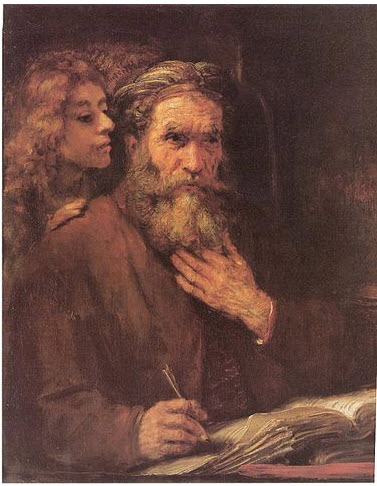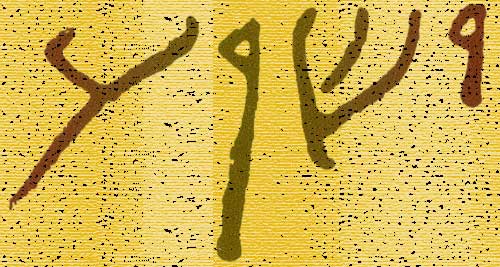22. But I say unto you--Mark the authoritative tone in which--as
Himself the Lawgiver and Judge--Christ now gives the true sense, and
explains the deep reach, of the commandment.
That whosoever is angry with his brother without a cause shall be in
danger of the judgment; and whosoever shall say to his brother, Raca!
shall be in danger of the council; but whosoever shall say, Thou fool!
shall be in danger of hell-fire--It is unreasonable to deny, as
ALEXANDER does, that three degrees of punishment are here meant to be
expressed, and to say that it is but a threefold expression of one and
the same thing. But Romish expositors greatly err in taking the first
two--"the judgment" and "the council"--to refer to degrees of temporal
punishment with which lesser sins were to be visited under the Gospel,
and only the last--"hell-fire"--to refer to the future life. All three
clearly refer to divine retribution, and that alone, for breaches of
this commandment; though this is expressed by an allusion to Jewish
tribunals. The "judgment," as already explained, was the lowest of
these; the "council," or "Sanhedrim,"--which sat at Jerusalem--was the
highest; while the word used for "hell-fire" contains an allusion to the
"valley of the son of Hinnom"
(Jos 18:16).
In this valley the Jews, when steeped in idolatry, went the length of
burning their children to Molech "on the high places of Tophet"--in
consequence of which good Josiah defiled it, to prevent the repetition
of such abominations
(2Ki 23:10);
and from that time forward, if we may believe the Jewish writers, a
fire was kept burning in it to consume the carrion and all kinds of
impurities that collected about the capital. Certain it is, that while
the final punishment of the wicked is described in the Old Testament by
allusions to this valley of Tophet or Hinnom
(Isa 30:33; 66:24),
our Lord Himself describes the same by merely quoting these terrific
descriptions of the evangelical prophet
(Mr 9:43-48).
What precise degrees of unholy feeling towards our brothers are
indicated by the words "Raca" and "fool" it would be as useless as it
is vain to inquire. Every age and every country has its modes of
expressing such things; and no doubt our Lord seized on the then
current phraseology of unholy disrespect and contempt, merely to
express and condemn the different degrees of such feeling when brought
out in words, as He had immediately before condemned the feeling
itself. In fact, so little are we to make of mere words, apart
from the feeling which they express, that as anger is expressly
said to have been borne by our Lord towards His enemies though mixed
with "grief for the hardness of their hearts"
(Mr 3:5),
and as the apostle teaches us that there is an anger which is not
sinful
(Eph 4:26);
so in the Epistle of James
(Jas 2:20)
we find the words, "O vain (or, empty) man"; and our Lord Himself
applies the very word "fools" twice in one breath to the blind guides
of the people
(Mt 23:17, 19)
--although, in both cases, it is to false reasoners rather than
persons that such words are applied. The spirit, then, of the whole
statement may be thus given: "For ages ye have been taught that the
sixth commandment, for example, is broken only by the murderer, to pass
sentence upon whom is the proper business of the recognized tribunals.
But I say unto you that it is broken even by causeless anger, which is
but hatred in the bud, as hatred is incipient murder
(1Jo 3:15);
and if by the feelings, much more by those words in which all
ill feeling, from the slightest to the most envenomed, are wont to be
cast upon a brother: and just as there are gradations in human courts
of judicature, and in the sentences which they pronounce according to
the degrees of criminality, so will the judicial treatment of all the
breakers of this commandment at the divine tribunal be according to
their real criminality before the heart-searching Judge." Oh, what holy
teaching is this!
JFB.
The Book of Matthew
Matthew 2:2 - Where is he that is born King of the Jews? for we have seen his star in the east, and are come to worship him.
Matthew 18:3 - And Jesus said, Verily I say unto you, Except ye be converted, and become as little children, ye shall not enter into the kingdom of heaven.
Matthew in The New Testament - A Brief Overview

Painting of St. Matthew with Angel by Rembrandt
The Word Gospel. The first book of the English Bible that most of us read from is the Gospel of Matthew. Matthew is the first of the four gospel writings, yet there is only one gospel about Jesus Christ and there are four different writers: Matthew, Mark, Luke, and John. The word "Gospel" means "good news", and the good news is about Jesus Christ dying on the cross and then 3 days later conquering death and rising from the dead, offering salvation to all mankind, this is the Gospel.
Summary of the Book of Matthew
Brief Summary. Jesus of Nazareth is indeed the long awaited Messiah King of he Jews as foretold by the ancient Jewish prophets. He came to reveal how to enter the "Kingdom of Heaven."
Purpose. It is very obvious that the Gospel of Matthew was written for the purpose of revealing that the man Jesus of Nazareth was actually the King of the Jews, the long awaited Messiah, the sovereign Lord Jehovah who came from heaven to this world revealing to mankind the "kingdom of heaven". The King of the Jews, the Messiah Jesus fulfilled every prophecy that was spoken about Him in the ancient Jewish Scriptures, in the Old Testament. The prophecies that spoke of the "Kingdom" that the Messiah would bring would be a spiritual Kingdom that would never be destroyed.
Audience. When reading the book of Matthew it becomes clear that the writer was speaking to a Jewish audience. One of the obvious reasons is that the "Kingdom of Heaven" is mentioned over 30 times and never the Kingdom of God. This is because the Jews do not speak the name of God and this could be the very reason that Matthew used this phrase. There are many times while reading the book that an event happens and a prophecy is cited. The event is mentioned as the direct fulfillment of a promise made to the Jews by one of their Jewish prophets, and the fulfillment of the prophecy was happening before their very eyes. It is clear that the audience of people are the Jews, they were awaiting their King, and Matthew records that the King had come and they rejected their King.
Authorship. Early Christian writings and traditions have attributed the authorship of the Gospel of Matthew to the apostle Matthew. Many scholars question whether or not Matthew was the true author of the first Gospel, but there is no way at this current time to be absolutely positive based on historical evidence. Most agree that Matthew was the author. The Bible reveals that Matthew, or Levi, as he was sometimes called, collected taxes for the Romans. One day Jesus passed by and called Matthew to come and follow him, and Matthew did so. The Bible also records that Matthew held a banquet at his house with several of his tax collector friends and Jesus being invited to the banquet was the guest of honor (Mark 2:14-15). The Bible also provides a list of the 12 apostles and Matthew was named among them.
Date. There is no way to determine with absolute certainty the date that the book of Matthew was written. Most scholars agree that the book of Matthew was written before the destruction of Jerusalem in 70 A.D., this is because Jesus spoke of many events as though they had not happened yet. A large number of scholars do not believe in the miracle of prophecy and therefore insist that the Gospel of Matthew was written after the fall of Jerusalem because of the accuracy of the predicted events.
Language. There are many references among the books in the history of the early church that state that the Gospel of Matthew was originally written by Matthew in the biblical Hebrew language, and he was writing to an audience of Jews throughout the world who had become followers of Jesus. Unfortunately there is no evidence whatsoever of a Hebrew or Aramaic manuscript, so many scholars have agreed that the Gospel of Matthew is not actually a translation from Hebrew into Greek, but was actually written in Greek. The whole subject of the Gospel of Matthew being written in Hebrew must remain speculation rather than fact.
Outline of the Book of Matthew
The King Comes and His Kingdom is Rejected -
Matthew 1-12
The Rejection of the King's Teaching and Ministry -
Matthew 13-25
The King's Trial and Crucifixion - Matthew 26-27
The King's Victory and Resurrection - Matthew 28
The King's Commissioning of His Apostles -
Matthew 28
Matthew - Interesting Notes
![]() Matthew mentions four women in his genealogy which is not
typical for Jewish genealogical records: Tamar, Rahab,
Ruth, Bathsheeba who were all associated with some sort of
immorality. Tamar (incest), Rahab (harlotry), Ruth (a descendant
of Moab who committed incest) and Bathsheba (adultery). Christ's
greatness was in Himself not his genealogy.
Matthew mentions four women in his genealogy which is not
typical for Jewish genealogical records: Tamar, Rahab,
Ruth, Bathsheeba who were all associated with some sort of
immorality. Tamar (incest), Rahab (harlotry), Ruth (a descendant
of Moab who committed incest) and Bathsheba (adultery). Christ's
greatness was in Himself not his genealogy.
![]() There are many intimations for the word "King" in Matthew if one takes
the time to look. For example in chapter one there is a royal genealogy
mentioning king David at the start. Chapter two reveals the kingly gifts
of the Magi. Chapter three calls John the Baptist a "herald" which is a
cultural term that represents a herald for a king. Etc.
There are many intimations for the word "King" in Matthew if one takes
the time to look. For example in chapter one there is a royal genealogy
mentioning king David at the start. Chapter two reveals the kingly gifts
of the Magi. Chapter three calls John the Baptist a "herald" which is a
cultural term that represents a herald for a king. Etc.
![]() There are similarities with the number four. The four colors in the veil
of the Temple were purple, scarlet, white, and blue. The four faces of
the cherubim are the lion, ox, man, eagle. The four Gospel accounts are
Matthew, Mark, Luke, John.
There are similarities with the number four. The four colors in the veil
of the Temple were purple, scarlet, white, and blue. The four faces of
the cherubim are the lion, ox, man, eagle. The four Gospel accounts are
Matthew, Mark, Luke, John.
Quick Reference Maps - Matthew
The Kingdom of Herod the Great
The Divisions of Herod's Kingdom
The Beginning of Christ's Ministry
Nazareth and the Sea of Galilee
Jerusalem in the Time of Jesus
Jesus Journeys from Nazareth to Jerusalem
The Final Journey of Jesus to Jerusalem

The Name Jesus In Ancient Hebrew Text
"Yeshua" in First Century Hebrew Text. This is how the name "Jesus"
would have been written in ancient Hebrew documents. The four letters or
consonants from right to left are Yod, Shin, Vav, Ayin (Y, SH, OO, A).
Jesus is the Greek name for the Hebrew name Joshua or Y'shua which means
"The LORD or Yahweh is Salvation".
Matthew Resources
Outline of the Life of Jesus in Harmony
Simple Map of First Century Israel
Topographical Map of First Century Israel
Map of the Ministry of
Jesus
Map of the Roads in Ancient Israel
Map of the Roman Empire